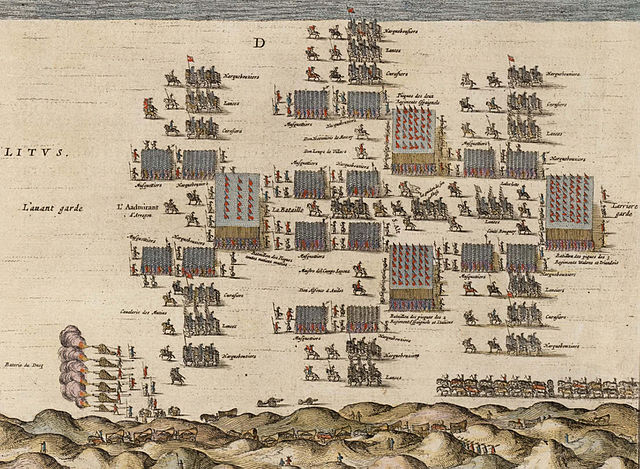Pedro de Acuña y Meneses, Marqués de Assentar
Pedro de Acuña y Meneses, Marqués de Assentar, also known as Pedro da Cunha, was a Portuguese-born nobleman and soldier who served in the Spanish army during the 17th century. Appointed commander of the Army of Flanders in 1673, he was killed on 11 August 1674 at the Battle of Seneffe, then in the Spanish Netherlands.
Battle of Seneffe, where Assentar was killed on 11 August 1674
The Army of Flanders was a multinational army in the service of the kings of Spain that was based in the Spanish Netherlands during the 16th to 18th centuries. It was notable for being the longest-serving army of the period, being in continuous service from 1567 until its disestablishment in 1706 and taking part in numerous pivotal battles of the Dutch Revolt (1566–1609) and the Thirty Years' War (1618–1648). Because it employed or pioneered many developing military concepts more reminiscent of later military units, enjoying permanent, standing regiments (tercios), barracks, military hospitals and rest homes long before they were adopted in most of Europe, the Army of Flanders has been considered the world's de facto first modern professional standing army. Sustained at huge cost and at significant distances from Spain via the Spanish Road, the Army of Flanders also became infamous for successive mutinies and its ill-disciplined activity on and off the battlefield, including the Sack of Antwerp in 1576.

The Army of Flanders' deployment for the Battle of Nieuwpoort (1600).
The Army of Flanders taking Maastricht in 1579
Mutinous troops of the Army of Flanders ransack the Grote Markt during the Sack of Antwerp, in a Dutch engraving of 1576 by Franc Hogenburg.
The Battle of White Mountain, 1620, a triumph for the Army of Flanders and the Army of the Catholic League.





